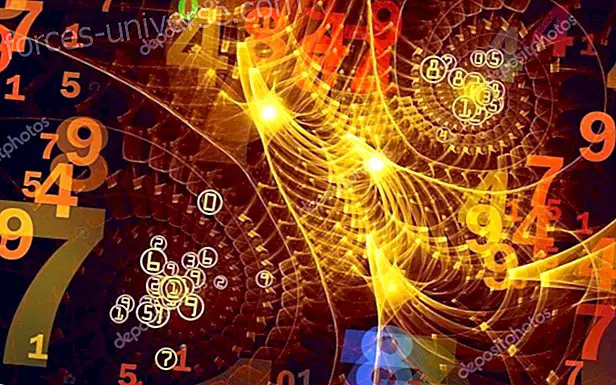
In the previous article a general approach to metaphysics was made, clarifying its etymology, division, and consistency. Being clear that ontology is the general branch of metaphysics and the foundation of all sciences and knowledge, because they are based on the study of the common or ontological entity, that is: everything with material and formal existence within time, eg: you, your house, a table, a mountain, a cigarette, or the number 5; apprehended by the intuition of the 5 fingers of the hand, etc. Then it would remain to respond to the other dimensions. For this it is necessary, beforehand, to understand the methods that metaphysics use to question and access the real.
What are the methods of metaphysics?

All the great systems of metaphysics; for its construction they use tools that allow access to human reason to BE; in the pretense of addressing the totality of the real. Such tools are based on intuitive methods and discursive methods based on experience. Not before doing so from an attitude of openness that, as a child with incessant curiosity, throws itself to ask about everything he sees, this is the attitude or capacity of astonishment of the philosopher and the seeker. In this sense, intuitive methods are considered direct or immediate, while discursive are indirect or mediated. You have to be very careful and use the two together for greater strength.
Intuitive methods:

These form a starting path for metaphysics, always based on sensory data and perceptions obtained thanks to the senses, directly apprehending any entity; being then, the most deceptive method for the spirit, but which in turn can be perfected. In addition, all sensitive intuition starts the field of experimental knowledge to check various hypotheses. As it should be noted, the question is why intuition in its most basic degree, that is to say sensitive, can be misleading?
This is because reality captured only by the senses is only an appearance, and does not lead to an essence, for example; if it were only for our senses, we perceive that all the stars and stars that we see in the sky, revolve around our earth, and only distance - by optical illusion - not many kilometers from what they really do, it would also be affirmed that the earth has no rotation, when we know that all this is false.
What other types of intuition are there in metaphysics?

In addition, in metaphysics there are other types of intuition more elaborated to go towards the object itself, among them are:
Formal intuition or also called spiritual intuition: this is given by an act of the psyche itself, by one of the logical principles, namely: the principle of identity (which says that being is equal to itself or A = A) and the principle of non-contradiction that says “a thing cannot be and not be at the same time and under the same aspect” with this the mind directly captures the qualitative or formal difference of some entities from others. Here also includes meditation and its types for the capture of essences, since meditation is an act that includes real intuition.
The Real intuition: is the one that is used properly in philosophy and metaphysics, and allows to capture the essence, consistency and existence of any entity, penetrating the reality of things, correlating intersubjectively with them. Therefore, real intuition is divided into: Intellectual, volitional and emotional intuition.
- Intellectual intuition: it belongs to a second degree of abstraction and aims to capture the essence of an object, its constitution and possibility. It is based on the logical principle of identity that says: "every entity is equal to itself" allowing to ask for the authenticity of reality. Q. Are the real astral trips or mere daydreams with realistic dyes a product of my mind? Some philosophers who used this intuition include Plato, Spinoza and Husserl.
- Emotional intuition: this type of intuition belongs to the field of aesthetics, ethics and morals, and allows us to capture the value of substances, whether they are first or second. This type of method asks about the axiological properties of things and of human consciousness. Ex: is God good or hand? Is reggaeton music pleasant or unpleasant? Or is the painting of da Vinci ugly or beautiful last dinner?
- Volitional intuition: allows the existence of an object to run and capture, this intuition is existentialist because it allows us to see oneself as a being immersed in the world with objects that transcend one's own subjectivity, being in one instance the obstacles that arise in life and before human desires those who give existence to things. In this way, this intuition also allows us to capture the usefulness of what is outside of my being, for example: If there is a god or an angel to serve me ?, What is the use of doing an astral journey?
As I saw the intuitions may fall into mere subjectivity, but they open the way to reflection by understanding reality, allowing you to make your own conjectures, reasoning and hypotheses of everything you perceive, feel and the ways you capture the world, in order for you to become a more free and autonomous being.
Discursive Methods:

On the other hand, metaphysics, uses discursive methods, which do not go directly to the object or take it as an obvious reality, but instead surround it to study it more reflexively until it finds its consistency, truthfulness and essence. With a more “objective” tone among these methods, the following stand out:
The majéticaica: It is a method that is developed with a heuristic moment of the human spirit, that is, before any question, the psyche will have to look for and find an increasingly satisfactory internal unconscious answer or definition, until reaching an essential criterion, to This is known as the art of giving birth to ideas .
The dialectic: This method is more elaborate than the previous one, because once the concept, criterion or definition given to the question has been obtained, it will be pursued to contrast it with a counterposition. No criticism of the idea found or parida counteracting it until it reaches a clarification of the essential truth of some reality or entity. This is an agonistic moment for alm, where one struggles to reach a somewhat more objective criterion of truth.
This method according to Plato made the human soul remember what he had forgotten when he came into contact with this physical body. Likewise, it could also be related to the free association technique used by Freud's psychoanalysis, to find unconscious contents in patients.
Poetry: this is a literary genre to connect with the Self through aesthetic analogies and in this, unveil the inaccessible and ineffable character of the spirit ritu, which escapes rational language. Ultimately, it constitutes a method on the aletheia of reality and the subjective dimension.
The Cartesian doubt: This method marked the beginning of modernity, thanks to Descartes, who started from an irrefutable question and from which the others can be derived. First, all possible knowledge is doubted : Is this real world? Does God exist? Is this a dream with realistic dyes on the head of a divine being? Or how do I know I'm not alone?
Indeed, you can doubt all this, but there is something I can't doubt: Can I doubt what I'm thinking? Of course I do, and in doing so I realize that I am exercising all my thinking, and if I think it is because I volitionally and intellectually intuit that there is something internal that exists, hence the famous cogito ergo sum (or I think then I exist (I am). Hence, consciousness and thought are the basis for perceiving metaphysical reality.
The Cartesian method, always part of the self as undoubted truth, and then understand 4 steps, namely:
- Not accepting anything that is covered by the senses as evident (which, as we have already seen, the senses deceive us.)
- Division of reality or entity to study in as many parts as possible.
- Go from its simple elements to the most elaborate and complex.
- List or synthesize the various divisions that have been made.
Phenomenological method : This combines elements of both methods and addresses the experience of the thing itself as it manifests itself to consciousness; through intuition and then proceed to describe the analysis or decomposition of what it implies and results from such intuition, separating any prejudice or any theory about the thing itself, in order to understand the constitution of the thing itself. It has the following elements:
- Phenomenological reduction (put the studied in brackets and break it down into its parts),
- Inter-subjective corroboration (transcends Cartesian subjectivism, by placing the object on a social horizon)
- Eidetic reduction (intuition of essences, stripping the object of its non-essential or accidental elements in an act of imagination)
The Tarot: this method is, in turn, an intrapsychic tool to discover the folds of the human psyche, through the symbolism and basic archetypes that are established in the personal and collective unconscious invested by a series of arcana.
This method, like the previous one, is a combination of both sensible and real intuition, as well as discursive properties, since a symbolic arcane is sensed through the senses, intellectual apprehension and synchronicity, preceding a question whose response has been hidden inside, in order to elucidate it and reflect its essential content to integrate it into consciousness.
As you can see, from all these basic methods of metaphysics and their application; the human being manages to learn to discern within the appearance of reality in order to understand hidden aspects of the ontological entity, and the types of entities. In the next articles we will be elucidating other tools, and issues addressed in these topics, as well as the types of entities that exist.
Author: Kevin Samir Parra Rueda, editor in the big family of hermandadblanca.org
More information in:
- Ferrater, J. (1964). Dictionary of Philosophy. (5th ed.). Buenos Aires, Argentina: South American Editorial.
- Morente, G. (1980). Preliminary lessons of philosophy . (9th ed.). Mexico City: Editorial Porrúa.






